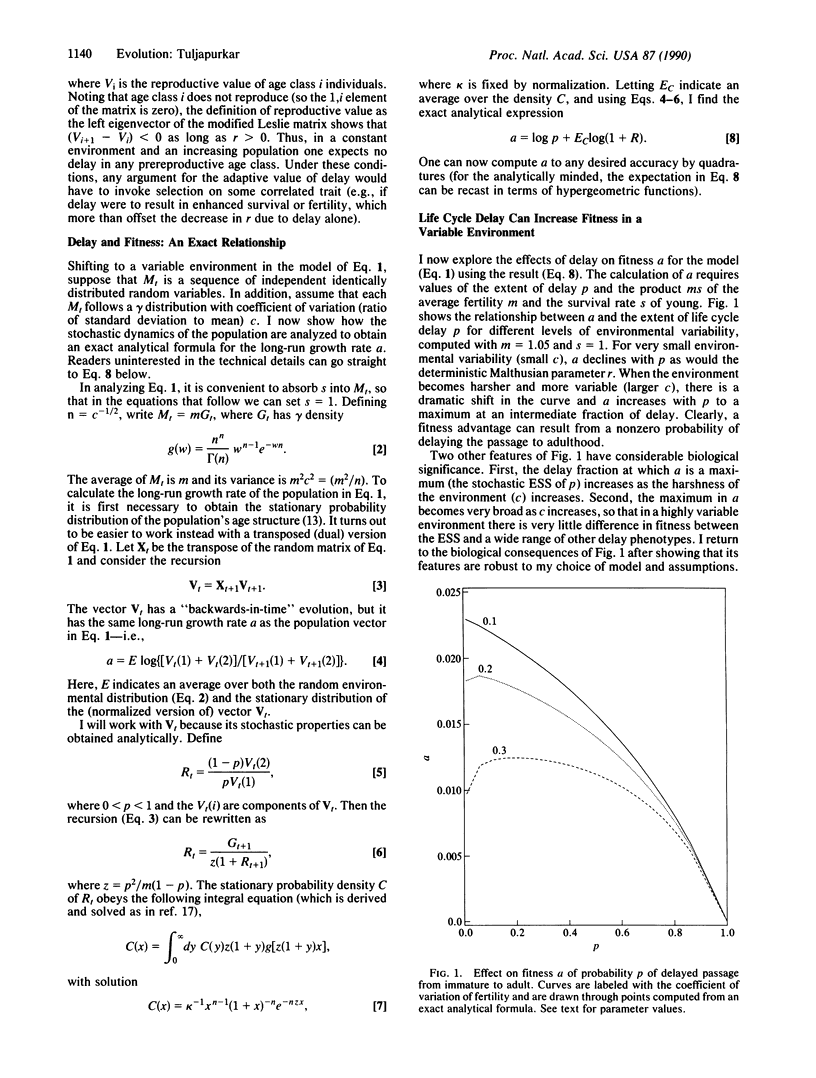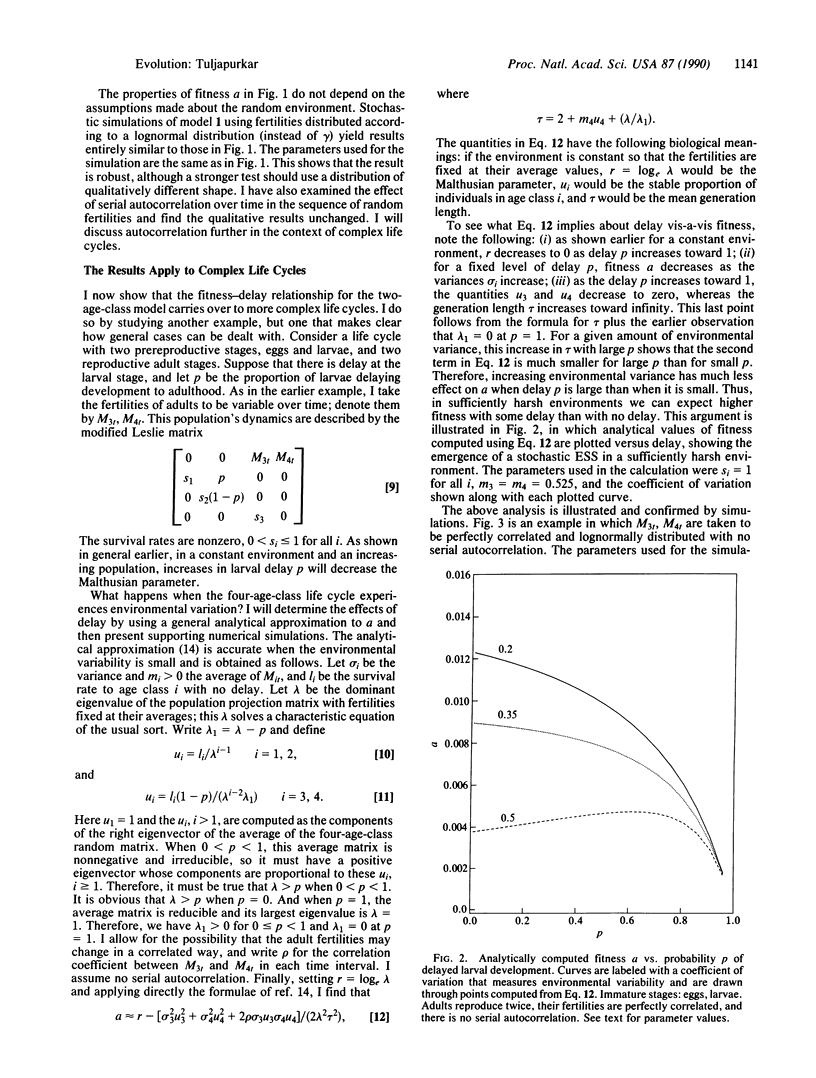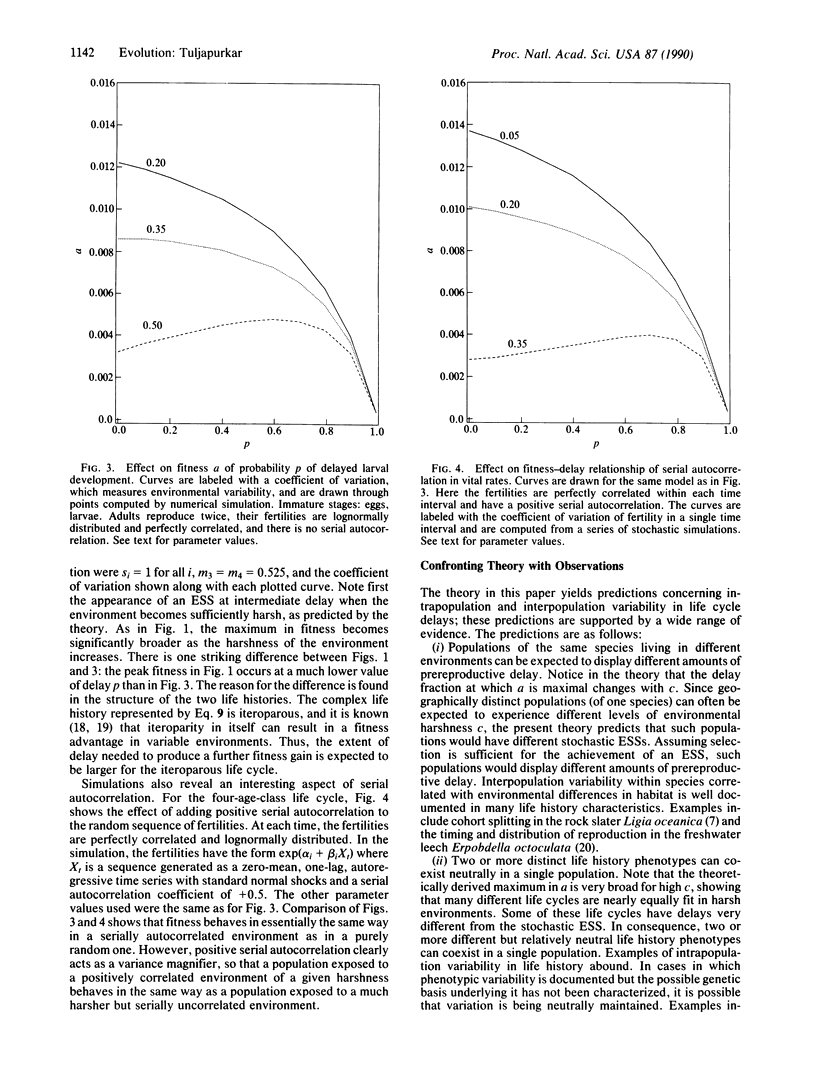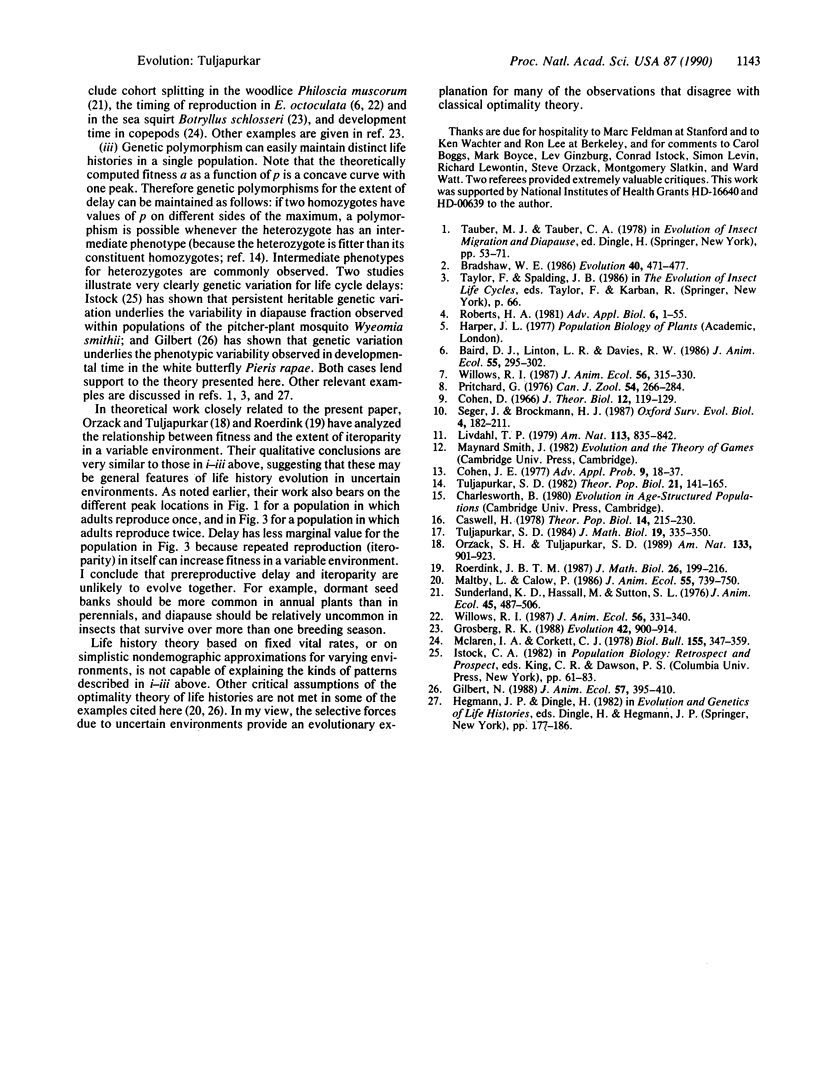Abstract
Many organisms delay the initiation of reproduction even though such delay is not adaptive in a constant environment. Theoretical arguments in this paper show that delaying reproduction can increase fitness in a sufficiently variable environment. This paper uses stochastic demography to analyze the fluctuating population structure produced by environmental uncertainty. The results explain previously puzzling features of life cycle delays observed in nature, predicting that populations of the same species living in environments of differing harshness can display different life history phenotypes, a number of distinct life history phenotypes can coexist neutrally within a single population, and genetic polymorphisms are easily maintained if heterozygotes have intermediate life history phenotypes.
Full text
PDF




Selected References
These references are in PubMed. This may not be the complete list of references from this article.
- Caswell H. A general formula for the sensitivity of population growth rate to changes in life history parameters. Theor Popul Biol. 1978 Oct;14(2):215–230. doi: 10.1016/0040-5809(78)90025-4. [DOI] [PubMed] [Google Scholar]
- Cohen D. Optimizing reproduction in a randomly varying environment. J Theor Biol. 1966 Sep;12(1):119–129. doi: 10.1016/0022-5193(66)90188-3. [DOI] [PubMed] [Google Scholar]
- Tuljapurkar S. Demography in stochastic environments. I. Exact distributions of age structure. J Math Biol. 1984;19(3):335–350. doi: 10.1007/BF00277104. [DOI] [PubMed] [Google Scholar]


